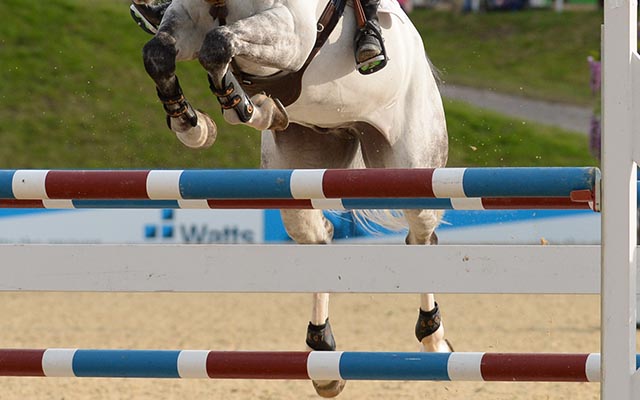There is arguably more benefit to putting a red ribbon in the tail of a horse known to kick than not, it is thought.
Tail ribbons are widely used to alert other riders to horses who may be green, or stallions, and red is accepted as a warning that anyone approaching too closely – for example in a warm-up – may be kicked.
Confusion has arisen as to whether using one could be seen as acknowledging that a horse is likely to kick, and so render the rider liable if another horse or person were to be injured.
But Hannah Bradley, of The Equine Law Firm, told H&H she would lean towards wearing one.
“Claims for compensation for damage caused by animals are governed by the Animals Act 1971,” she said. “In the case of domesticated animals, one of the requirements for a claim to succeed is that the keeper must have knowledge of the relevant dangerous characteristic. In this case, they must know that the horse has a propensity to kick out.
“It is fair to say that if a horse did have a ribbon in its tail, there would be no need to prove that the owner knew that the horse had a propensity to kick and the claim would arguably be easier to pursue.”
But there are two defences to potential claims under the act, which may be relevant in such a case.
“The keeper will not be liable for damage caused by a horse kicking out, if either the damage is due wholly to the fault of the person suffering it or the damage is suffered by a person who has voluntarily accepted the risk of it,” said Ms Bradley.
“If an individual has walked close to the hindlegs of a horse with a ribbon in its tail, depending on the precise circumstances, it would be easier to argue that the claimant either wholly caused the injury – for example, if they were making lots of noise or alarming the horse in some way – or that the claimant accepted the risk of the injury, if the claimant has seen the ribbon, but walked close to the horse nonetheless.
“Finally, it’s important not to forget the practical value of wearing the ribbon, in that we do not know how many accidents, and claims, are avoided by someone giving a horse a wider berth, having seen the ribbon.”
British Showjumping (BS) CEO Ian Graham told H&H BS has no rules on ribbons.
“But I’d say it’s an accepted practice that if you have a horse who doesn’t like other horses close behind to wear a red ribbon as a warning.”
You might also be interested in:

‘It only takes one idiot’: warm-up incident sparks plea for action
'It’s only a matter of time before I witness a serious accident in a collecting ring as it’s a dangerous

Prepare to be amazed — 18 showstopper tail plaits and braids
To celebrate the art of the perfect tail plait — and to enjoy some extraordinary masterpieces — here are 18

Do you know your red from your white ribbon in a horse’s tail? Find out with our colour quiz
An outsider to the horse world could reasonably request a colour coded chart to navigate our customs — from the

Subscribe to Horse & Hound magazine today – and enjoy unlimited website access all year round
Horse & Hound magazine, out every Thursday, is packed with all the latest news and reports, as well as interviews, specials, nostalgia, vet and training advice. Find how you can enjoy the magazine delivered to your door every week, plus options to upgrade your subscription to access our online service that brings you breaking news and reports as well as other benefits.




